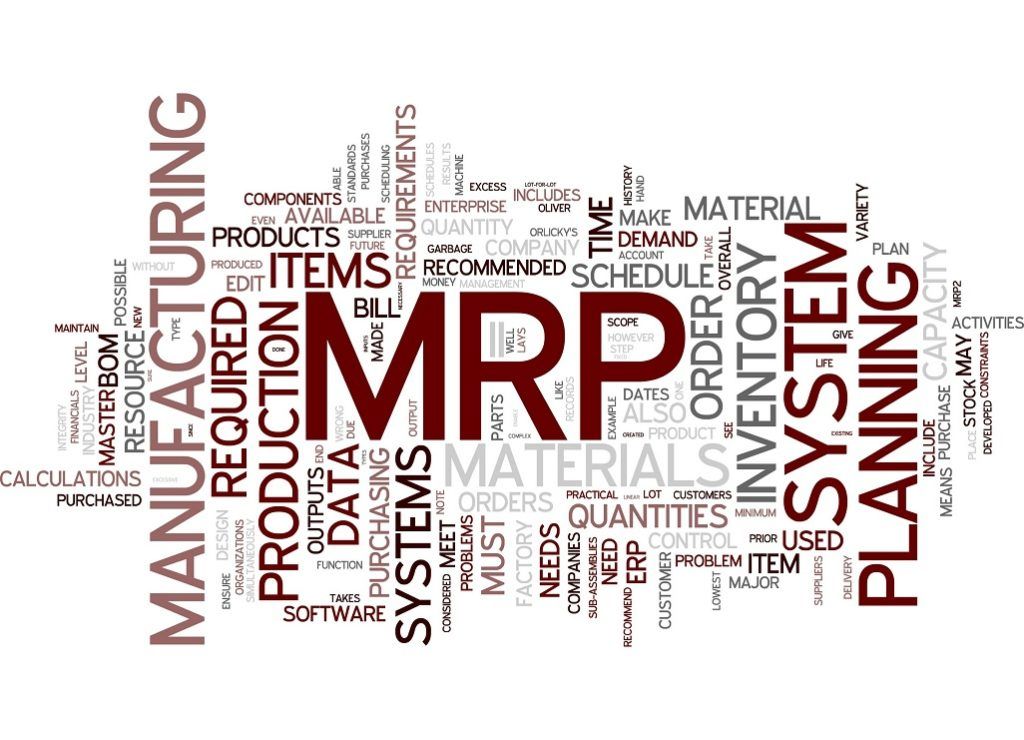Material Requirements Planning (MRP)
An inventory management system that is completely operated digitally through a wide variety of computer-based platforms
What is Material Requirements Planning (MRP)?
Material requirements planning (MRP) is an inventory management system that is completely operated digitally through a wide variety of computer-based platforms. MRP is exclusively designed to improve the inventory efficiency of a business by estimating quantities of raw material and scheduling timely deliveries.

In addition, the material requirements planning system (MRP) helps businesses maintain low inventory levels by controlling manufacturing, purchasing, and delivery activities.
Before the creation of hardware that could run MRP software, inventory was scheduled by hand and was dominated by methods such as reorder point (ROP)/reorder quantity (ROQ).
The History of Material Requirements Planning
The implementation and constant innovation surrounding the MRP inventory system created a long-lasting effect that can still be seen today.
- Before computer-engineered systems became prevalent in the business world, inventory was recorded by hand.
- As time went on, users became aware of how inefficient hand-kept inventory was, creating demand in the market for the most productive method.
- In the early 1950s, MRP was first computerized by aero-engine makers associated with General Electric and Rolls Royce.
- Before MRP became commercialized, it was reinvented to use the Polaris program.
- In 1964, MRP was released to specific individual businesses, being used first by Black & Decker.
- By 1975, over 700 companies had implemented MRP as their inventory management system.
- Since 1975, the MRP system has been continuously updated to be made more efficient for businesses. Including several different models.
- Today, MRP is one of the most common and widely used inventory management systems in the world.
Material Requirements Planning Objectives
When it comes to the MRP inventory management system, there are three primary objectives that the software seeks to provide.
- To ensure that raw materials are readily available for production and products are readily available for delivery to consumers.
- To sustain the lowest raw materials and finished product levels in store.
- To organize manufacturing, delivery schedules, and purchasing activities.
As basic as the objectives sound, organizations would be significantly less productive if it weren’t for the implementation of the MRP inventory system.
Data Needed for MRP Systems
To successfully run an MRP inventory system in an organization, there is an assortment of data required for successful use.
End Item: The MRP system requires the user to describe what type of product is being created and its specific demand level.
Quantity: The system requires the user to input the amount of quantity needed to meet specific demand schedules.
Shelf Life: The amount of time that a product is able to remain in the warehouse is required for the planning aspect of an MRP system.
Inventory Records: Records of materials available for use, work in progress, and completed.
Planning Data: Restraints and directions, such as labor, machine standards, testing, techniques, and commands, are required to use the MRP system.
Bills of Materials: The system requires detailed accounts of materials and components used to make each of the products.
After inputting all the data throughout the system, it can be run in a business.
MRP Systems vs. ERP Systems
In the manufacturing sector, the two most dominant inventory systems are the enterprise resource planning (ERP) system and material requirements planning (MRP) system.
In terms of functionality, they both differ in specific ways. The MRP system is designed to progressively increase inventory efficiency in a business through control of manufacturing, scheduling, and purchasing. On the other hand, the ERP system provides financing, manufacturing, supply chain, purchasing, selling, and planning in one single system.
Compositionally, MRP is a solo system that is used for its extensive focus on providing few functions while the ERP system is integrated and provides multiple functions in one unit. In addition, MRP systems can be easily combined with other inventory software, but this is not the case for ERP systems.
As a result, MRP systems are more commonly used in businesses.
Advantages and Disadvantages of MRP
When considering using an MRP inventory system within an organization, it is crucial to know the advantages and disadvantages associated with implementation. The advantages include:
- Maintains low inventory level
- Reduction of associated costs through material planning
- Ensure capacity utilization
- Extensively tracks every piece of inventory that comes in and goes out
- Reduces cost of warehousing product
- Increased organization throughout the business
- Scheduled shipment and delivery of the product
The disadvantages when using a material requirement planning inventory system include:
- Reliance on the precise input information
- There are scheduling delays, wrong order quantities, and inefficient tracking if the information is inputted inaccurately within the system
- Requires extensive maintenance of robust databases
- In order to use the system, proper training is required
- The system is not cheap and requires a substantial capital investment
Learn More
CFI is the official provider of the global Financial Modeling & Valuation Analyst (FMVA)™ certification program, designed to help anyone become a world-class financial analyst. To keep advancing your career, the additional CFI resources below will be useful: